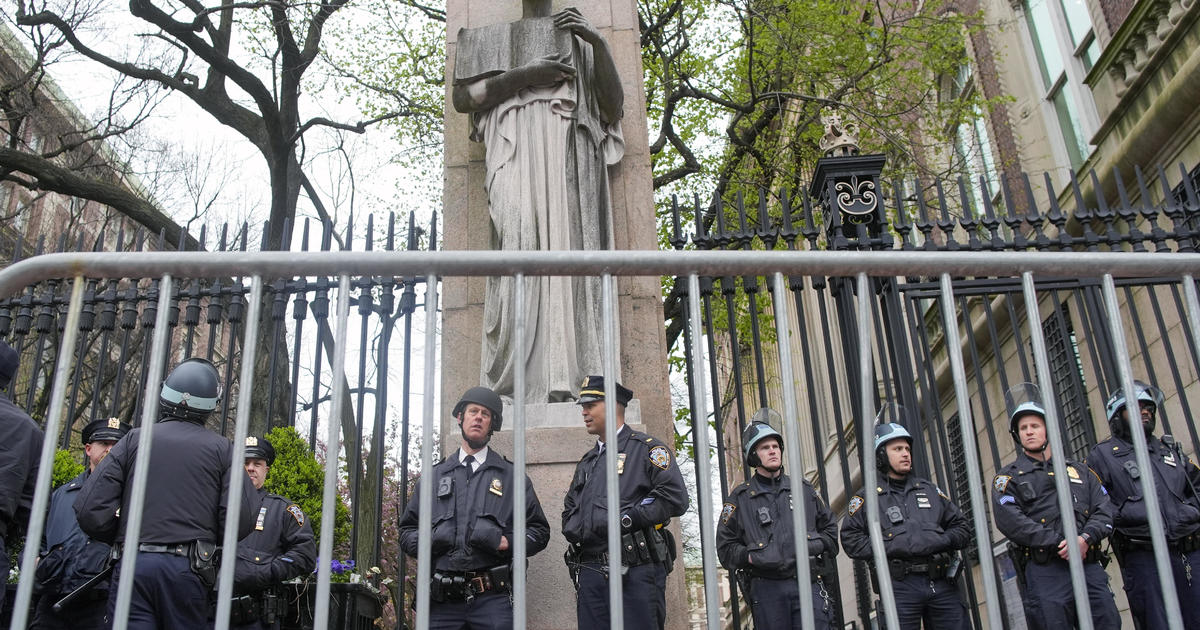Met Exhibition Celebrates Andy Warhol And His Influence On Other Artists
NEW YORK (CBSNewYork) -- Andy Warhol left an indelible mark on pop culture, but what about his impact on other artists?
As CSB 2's Dana Tyler reports, the Metropolitan Museum of Art has mounted a new exhibition called, "Regarding Warhol: Sixty Artists, Fifty Years," featuring Warhol's own work alongside that of other artists who have reinterpreted or responded to it.
Visitors would need more than the proverbial 15 minutes to see the exhibition, as they explore Warhol's impact on the art world.
"We selected about 50 amazing works by this extraordinary artist, and juxtaposed them with about 100 works by 60 other artists – about three generations worth of artists who work after him and explore his themes in really exciting ways," said assistant curator Ian Alteveer.
Visitors may wind their way through five galleries, which started with a 1961 painting by Warhol that he created as a store window dresser.
Warhol burst onto the gallery scene a year later by putting American brands into new light. Campbell's soup was flattered.
"They seemed to not have minded so much that he used their corporate logo and all of that in his artwork, and they, in fact, bought a similar soup can to this in 1964," Alteveer said.
Alteveer said Warhol's influence quickly spread around the globe. Chinese dissident artist Ai Weiwei handpainted the Coca-Cola logo on a vessel that is thousands of years old, also displayed in the exhibition.
"The idea that this American brand kind of colonizes, in a way, the history of a different continent is a pretty trenchant and deep statement," Alteveer said.
Cuban artist Felix Gonzalez-Torres channeled Warhol through a bittersweet message about the AIDS epidemic. His hands-on art is a 175-pound pile of colorfully-wrapped candy called, "Untitled: Portrait of Ross in L.A." -- a tribute to his partner who had preceded him in death in 1990.
"As you take a piece of candy and you put in your mouth, and if you know Ross weighed about 175 pounds before he began to waste away, you have a piece of his body, in a way, in your hand, and as you eat it you have a sweet sensation in your mouth, and the candy pile beautiful and sparkling and lovely just as Ross was, but as we take it away and eat pieces of him he disappears," Alteveer said.
Next come some of Warhol's most famous silk screen portraits showing his expertise as a master colorist. Even as a child, he was obsessed with celebrities.
Among the works on display is his "20 Marilyns" from 1962, featuring none other than Marilyn Monroe.
"I love, in this picture, how the orange plays off the turquoise, and also how he draws your attention to the fact that it's repeated by kind of messing up her eye shadow, or messing up the registry of her lips," Alteveer said.
Other artists' interpretations show celebrities in all their glory – or not.
"We love this sculpture by Jeff Koons of Michael Jackson and his famous pet Chimpazee, Bubbles, done in this very, very gaudy, gilded style in ceramic -- almost as if it's a little tchotchke you would put on your shelf, but instead blown up to larger than life size," Alteveer said.
The next room is titled, "Queer Studies," and showcases examples of shifting identities.
"He himself was never all that clear about his own sexuality, and so we start the section with this mysterious and wonderful camouflage self-portrait from 1986," Alteveer said. "It's the last made before his untimely death in '87."
The show's finale is a uniquely Warholian experience.
"We end the show in this spectacular gallery of Warhol's cow wallpaper and his silver clouds, both from 1966, creating an environment that's interactive; that is fun and fantastic," Alteveer said.
Warhol was born in Pittsburgh in 1928, and produced his most seminal work in New York City. His studio, known as the Factory, was located at a since-demolished building 231 E. 47th St. in Midtown from 1964 to 1968, in the Decker Building at 33 Union Square West from 1968 to 1973, at 860 Broadway on the northern edge of Union Square from 1973 to 1984, and on Madison Avenue between 32nd and 33rd streets from 1984 to 1987.
"Regarding Warhol: Sixty Artists, Fifty Years" was scheduled to be at the Met through Dec. 31.
What do you think about Warhol's legacy? Leave your comments below...



